With beautiful patterns and styles, it’s little wonder Wallace Sterling Silver is a true collectible, sought-after by antique dealers and silverware enthusiasts alike.
One of the biggest selling points to owning Wallace sterling silverware is its signature appearance. They are classy, elegant, and timeless. And because there are so many different varieties, shapes, sizes, and patterns – they are highly collectible in the antique world.
Today we’re going to explore just how valuable antique and vintage Wallace sterling Silver can be. So dust off and wash your old silverware. Take a closer look at its design and who knows, perhaps your silverware is worth its weight in gold?
Table of Contents
History of Wallace sterling silver
The early 1800s
Robert Wallace was born to Scottish immigrants in Connecticut, in 1815.
At 16, he was an apprentice for Captain William Mix, a spoon maker, igniting in Wallace a passion for smiting. In 1833, Wallace opened his workshop and began creating his signature brand and style of silverware spoons and teaspoons.
In 1834, Wallace met with Louis Feuchtwanger. He was a German chemist who taught him about making durable silverware, known at the time as German silver or nickel silver.
Wallace is often regarded as the first American to truly revolutionize this new craft, and he soon began supplying several chains with new silverware.
The 1850s
By 1849, Wallace diversified into several lines of products, including knives and forks. In the following decades, the company went through several changes and mergers.
Robert Wallace died in 1892, but his legacy continued with his sons, and the company became the biggest producer and seller of flatware silver.
The 1930s
The Wallace company began mass-producing silverware. It was during these years many iconic and classic vintage designs were made, including William Warren’s ‘Third Dimension Beauty’, Sir Christopher, and Rose Point to name but a few.
The 1950s
Flash forward to the 1950s, and the company was renamed Wallace Silversmiths and purchased two other silver manufacturers, the Tuttle Silver Company and Smith & Smith. The company easily became one of the largest and most recognized producers of silverware in America.
What are common Wallace sterling silver flatware marks?
Maker’s marks are essentially logo, brand, or signature that tells us who made the antique or vintage piece. It can also tell us when and where was made, too.
Luckily, it was very common for Wallace to brand their silverware. If your piece does not have one of the following markings, it is likely not Wallace Silverware.
The following marks are quite common on their products:
- A stylized “W” with the middle of the letter looks like crossed swords
- “Wallace” in block capital letters.
- A stag’s head surrounded by the initials “RW” (Robert Wallace), and “&S” (standing for ‘and Sons’)
The most popular Wallace flatware patterns
As with all antique and vintage collectibles, some designs are more valuable than others. Wallace silverware is no exception to this.
Wallace’s designs can easily be dated to set periods in the company’s timeline. The designs from the early 1930s, straight through to the 1950s, are often the most valuable at auction.
They include:
Rose Point
Inspired by the Venetian lace of the traditional Rose Point wedding veil, this series is one of the most popular of Wallace’s creations.
Introduced in 1934, Rose Point captures the lost art of needlepoint and features beautiful, intricate, and world-famous roses in full bloom on their handles. Prices range from:
- This 4 piece Rose Point place set is worth $239
- This 56-piece Rose Point sterling silver set is worth $1,584
Sir Christopher
This silverware pattern took inspiration from the world-renown architecture of the same name. Designs copied common features of cathedrals, churches, and spirituality in general.
They date from 1936 and can range in price from:
- This 4 piece Sir Christopher set is worth $219
- This 72-piece Sir Christopher set from 1935 is worth $2,200
Stradivari
Released in 1937, this pattern drew on the influence of violin maker, Antonio Stradivari. The Art deco style was incredibly popular at the time, and people were interested in simple, minimalistic features.,
Wallace designs subtly mirrored that of a violin, with dew-like drops flowing from front to back. Prices range from:
- This 6-piece Stradivari place set is worth $1,496
- This 57-piece Stradivari set is worth $3,145
- This 207-piece Stradivari set is worth $3,265
Grand Baroque
Produced in 1941, the Grand Baroque pattern drew much of its inspiration from the Renaissance. It marked a turning point for Wallace, where they became not only producers but designers as well.
Grand Baroque sets are often the most expensive Wallace collections, with prices ranging from:
- This 54-piece Grand Baroque sterling silver set is worth $4,056
- This 80-piece Grande Baroque sterling silver set is worth $4,799
Romance of the Sea
Romance of the Sea had a simple, minimalistic design to it. Produced in 1951, it has obvious inspirations from nautical mythology, with shell shapes and curves forming its signature look.
Though not as readily available as other patterns, this set can still fetch a high price at auctions, e.g.:
- This 5 piece Romance of the Sea set is worth $300
- This 52-piece Romance of the Sea set is worth $3,548
Is Wallace sterling real silver?
Sterling silver is real silver. However, like many manufacturers of the time, Wallace produced several types and qualities of silver. Some are sterling silver, but others may be silver-coated or even stainless steel.
So how can you tell if your prized Wallace silverware is the real deal?
Magnet test
Did you know that sterling silver is not magnetic? You may be able to spot fake silver by using a magnet nearby. If the piece joins strongly – this is a strong indication that it’s silver-plated, and that there is another metal type underneath.
If the magnet has no effect, that doesn’t rule out a silver-plating. But it can be reassuring!
Imprints
Wallace often labels their silverware on their base. Sometimes, they use the letters ‘STER’, to classify authentic sterling silver. Other times, they used the number ’92.5%’ which is the amount of pure silver contained in sterling silver.
Imprints with numbers like 18/8, 18/10, and 13/0 usually indicate stainless steel makeup.
Known patterns
If your silverware is part of a wider pattern or collection, this can usually indicate it is of high quality. Unsure if your piece belongs to a collection or not?
This website has an extensive database of Wallace designs.
Tarnish
Although dirt and decay are things we don’t like to see – sometimes they can prove your sterling silver is legitimate.
Sterling silver contains both silver and other metals like copper or zinc. These additional materials make the silverware prone to tarnishing.
Use a white polish cloth and rub your piece gently. If there’s a dark brown or black residue, this can indicate your silver is sterling, albeit suffering from some wear-and-tear.
If in doubt? Seek a professional
Especially if you have a wide collection of Wallace silverware, sometimes it pays to have them professionally appraised. Experts will be able to examine the silverware in detail by filing a small piece off to test its properties.
Is Wallace silver worth anything?
Now to one of the most important parts of owning Wallace silverware – are they worth much?
The short answer is yes. Wallace is one of the most popular and valuable brands of sterling silver, and if you own a piece, or perhaps even a collection, you could have some valuable vintage items on your hands.
Let’s explore just what makes Wallace silver truly sparkle.
Current silver value
One of the most common ways for people to value sterling silver is using the current rate for silver.
Sterling silver is often worth 92% of pure silver. However, markets fluctuate, and not every buyer or seller will use real-time information to inform their prices. Silver is often valued in ounces, and the market values can offer you a baseline from which to work. This website has daily updates on the current value of sterling silver.
Other factors which may influence the worth of sterling silver include:
Quantity
Speaking of ounces, sterling silver is worth its weight- literally. The more sterling silver you sell together, the bigger the profit margins.
It’s quite common for Wallace silver to be sold in bigger collections, in sizes like 4 pieces, 36 pieces, 48 pieces, and 72 pieces.
- A single Wallace sterling silver piece is worth $27
- This 4-piece sterling silver set is worth $154
- This 36-piece sterling silver set is worth $2,100
- This 48-piece sterling silver set is worth $2,500
- This 72-piece sterling silver set is worth $3,900
That said, there are some listings with even larger amounts of silverware bundled together. These lots are known to go for tens of thousands of dollars. Examples include:
- This 188-piece Sir Christopher Wallace sterling silver set is worth $19,995.
- This 303-piece Grande Baroque Wallace sterling silver set is worth $21,500
Type
When we think of Wallace sterling silver, we immediately think of flatware – a variety of dinner forks, knives, and spoons. But some other pieces of sterling silver can be just as valuable, if not more so.
Some examples of Wallace branded silverware well worth your investment include:
1. Plates
Plates come in many different shapes, sizes, and styles. Singular plates sell for a couple of hundred dollars on their own.
- This Stradivari Patterned dinner plate featuring Victorian trim is worth $479
- This Rose point sterling silver plate is worth $609
- This R. Wallace and Sons Monogram serving dish is worth $785
Like flatware, plates are often sold in dinner party sets of 6 and above, and can fetch higher prices with more in the collection:
- This set of 6” Wallace sterling silver bread plates is worth $699
- This set of 15 6” Wallace sterling silver dinner plates is worth $3,250
- This set of 10” Wallace Sterling silver dinner plates is worth $8,750
2. Serving pieces
Serving plates are long, stately pieces that are infamous for fine dining and luxury.
They’re particularly valuable because these plates are often sold on their own, and don’t require a large collection of vintage Wallace collectibles to catch the eye of buyers. Some examples include:
- This Wallace sterling silver under plate is worth $750
- This 12” Rose point serving platter is worth $825
- This Rose point serving platter is worth $1,025
3. Niche pieces
Several unique, niche flatware pieces can be worth a lot of money for collectors who want to complete or expand their existing sets. These include vintage pieces like:
- A cocktail fork worth $18
- A salad fork worth $35
- A serving spoon worth $110
- A sterling silver creamer and saucer worth $334
Condition
if your sterling silver is in poor condition, it could be deemed worthless. Examine your pieces closely for any signs of scratches, signs of damage, tarnishing, bending, and more.
Some collectors appreciate light repair work and/or cleaning, though we always recommend consulting a professional first.
The difference between antique silver and sterling silver
Silver has a very regal, refined look about it. But is there much of a difference between antique and vintage sterling silver? Let’s weigh up the differences.
Age
Age is the primary difference between an antique and a vintage collectible.
- Antiques are older than 100
- Vintage is older than 20 but younger than 100.
The most popular pieces that Wallace made are from 1930 onwards. It will still be a couple of years before your Wallace sterling silver becomes antique.
Chemicals
The most obvious difference between different types of silver is their chemicals. There was a surge in sterling silver production in the 1940s. Beforehand, pure silver was a more common material.
The differences between the two include:
- Pure silver: Made up of 99.9% silver. Usually has a mark stating this on their base.
- Sterling silver: Records show Wallace made sterling silver up to a quality of 92.5%. The remainder was most often copper or zinc.
Tarnish & Corrosion
Ironically, in certain situations, older antique silverware can be stronger and longer-lasting. Pure silver is naturally a hardy, resistant material, and does react with oxygen or water at ordinary temperatures. The only thing which can affect it is atmospheric pollution, which creates a black tarnish.
Sterling silver will tarnish quicker because of its makeup. Copper and zinc expose the silver to more weaknesses, speeding up corrosion and decay.
Design
Depending on the type of silver, there were only certain designs you could do on sterling silver.
Antique silver is more likely to be simple in design. That’s because pure silver is a harder metal to work with, and was generally used for fittings, and frames.
Sterling silver was more malleable and structured. Smiths could carve intricate details into them and experiment with shape and size, leading to artistic jewelry, handles, and plate designs.
Color
Pure silver has a bright, white-grey, and metallic appearance. Sterling silver is more mid-toned, shaded, and neutral in color.
Stamps and marks
Silver can be marked differently depending on how pure it is.
Antique, pure silver will often have a mark that defines its chemical makeup. Many pieces will have ‘99’, ‘999’ or ’99.9’ on the base to show its high-quality, pure silver.
On the other hand, sterling silver is marked with a lower number, or may simply just have ‘Sterling Silver’ stamped on the base.
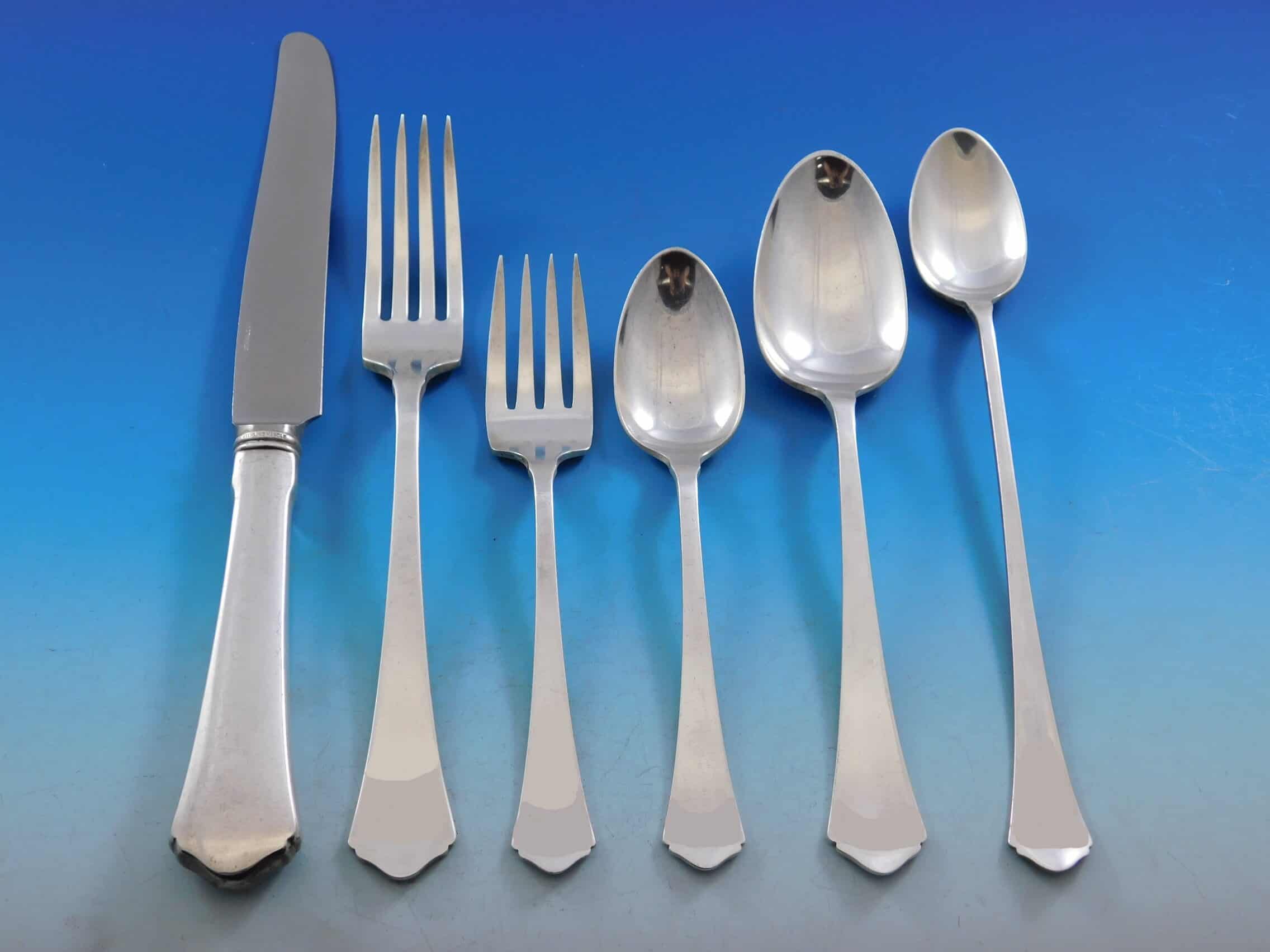
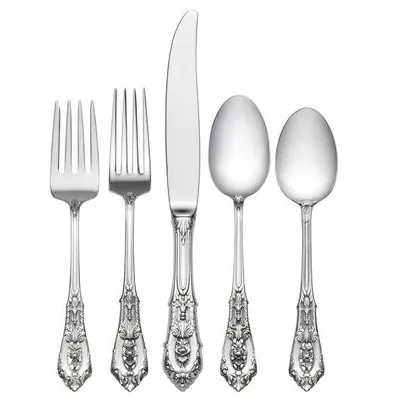
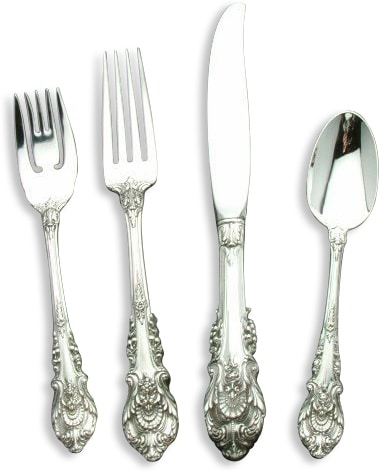
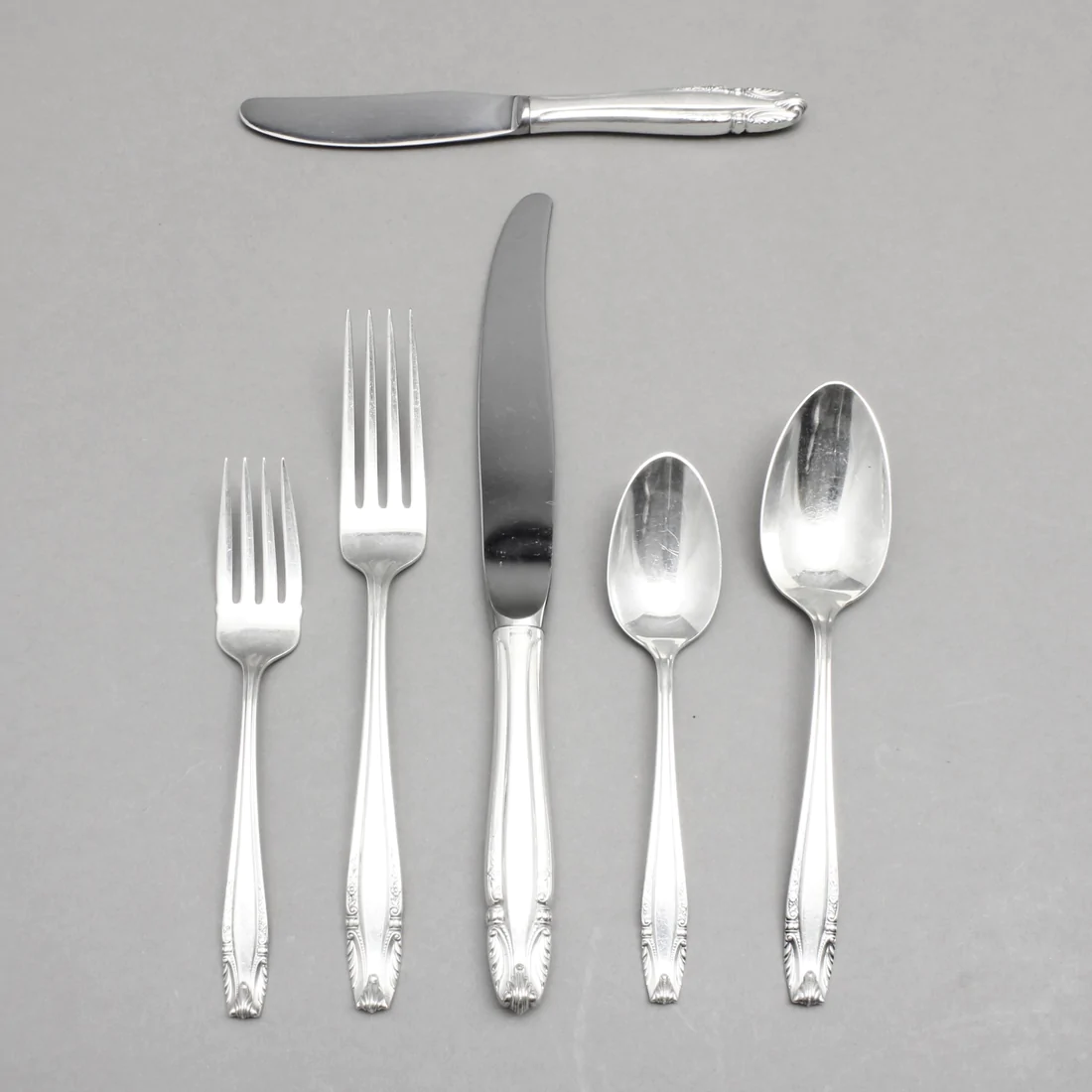
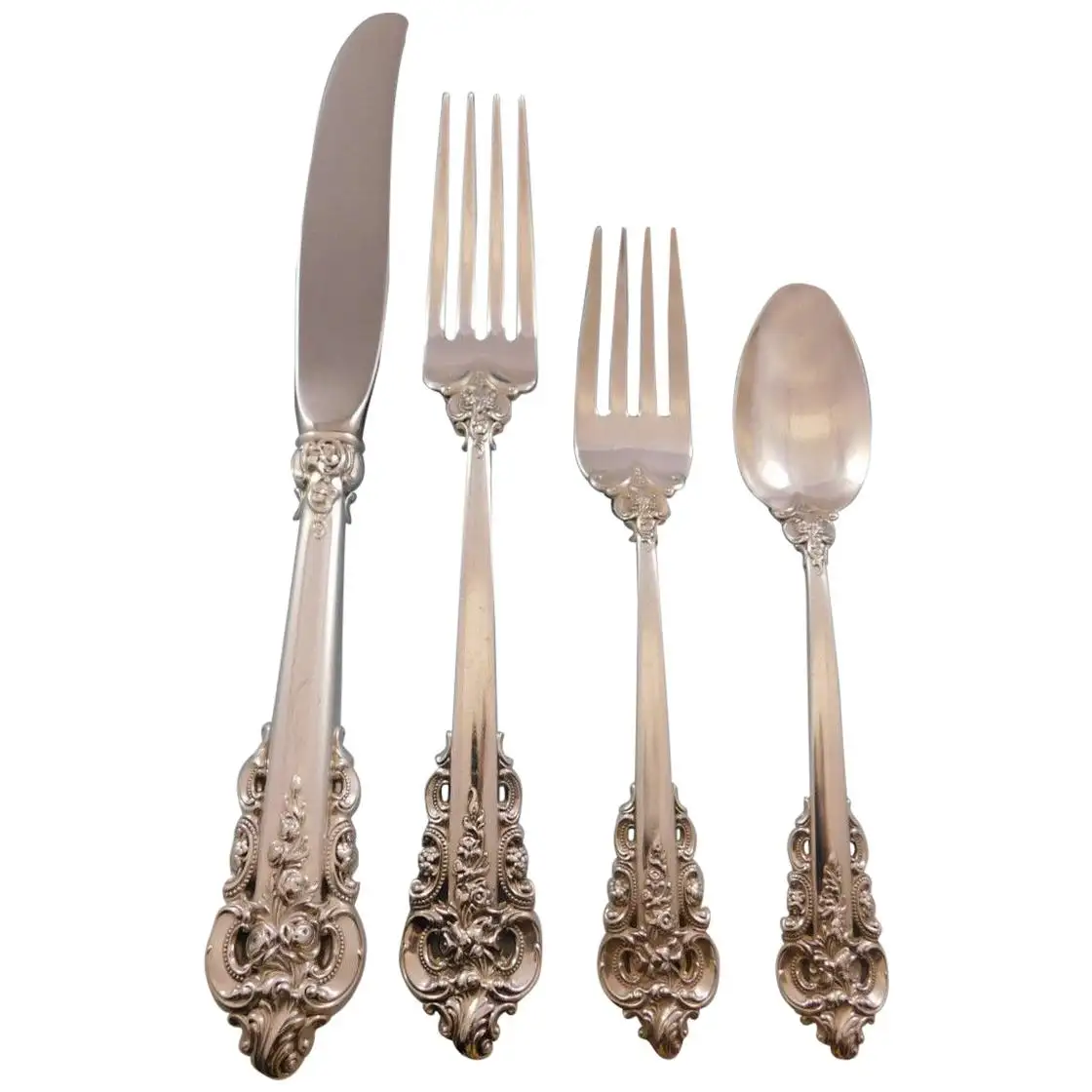
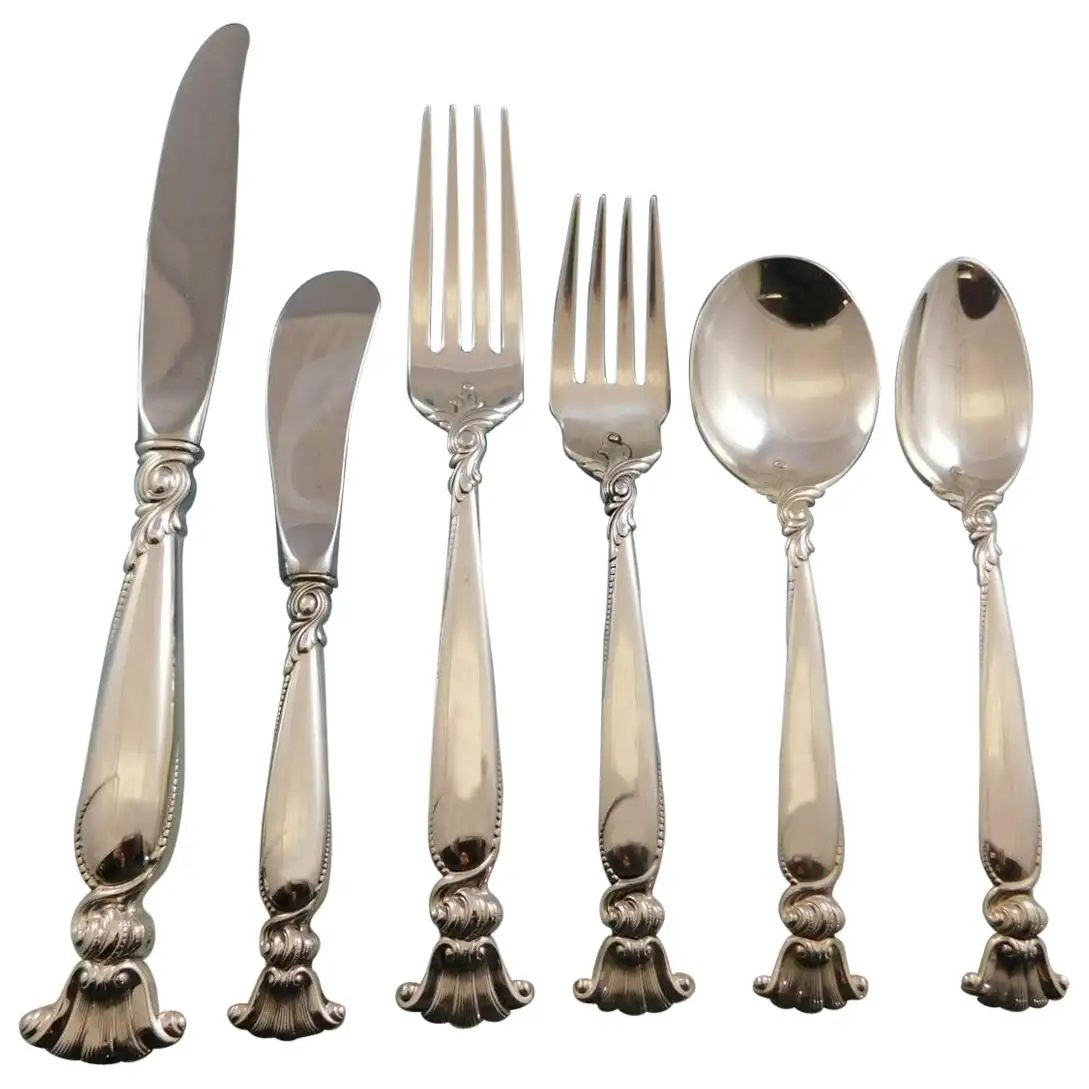
I have a Wallace plate sterling 4273.can you tell me what year it is from?